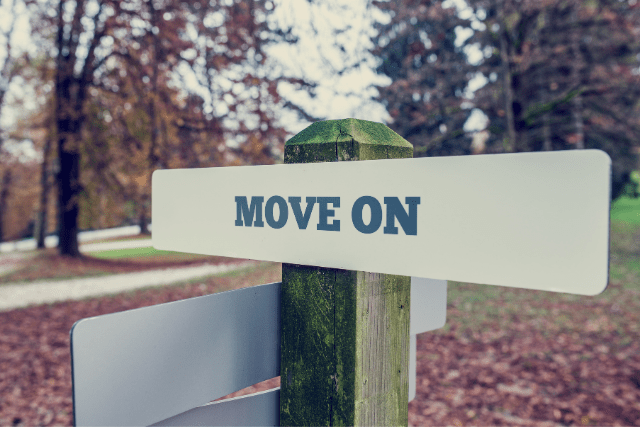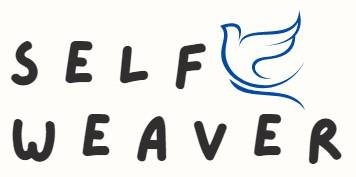Weaving our lives together through self-weaving can help us to overcome trauma and adversity. Take the example of Sarah, a young woman who experienced intense anxiety and depression after a series of traumatic events.
She had been struggling for years with feelings of helplessness and fear until she discovered the practice of self-weaving — a form of mindfulness that helped her become aware of her emotions, process them, and find inner peace. Through this practice, Sarah could heal from her trauma and live a life full of purpose and joy.
At its core, self-weaving is about connecting with our true selves to achieve balance and harmony. It’s about letting go of limiting beliefs, facing our fears head-on, understanding our true needs, and taking action towards creating positive change within ourselves.
Self-weaving empowers us to lead more fulfilling lives by giving us the tools to work through difficult times with strength and courage. In this article, we will explore the history of self-weaving and how it can be used to overcome trauma and adversity effectively yet compassionately.
Key Takeaways
- Self-weaving is a form of mindfulness that helps individuals become aware of their emotions, process them, and find inner peace to overcome trauma and adversity.
- Key elements of self-weaving include personal self-reflection, building resilience, and developing coping skills.
- Self-weaving can be used as a form of self-care to find emotional healing by connecting to personal power and strength, reflecting on how trauma and adversity have affected individuals, and creating something meaningful from seemingly disconnected pieces.
- Self-weaving empowers individuals to lead more fulfilling lives by giving them the tools to work through difficult times with strength and courage.
What is Self-Weaving?
Self-weaving is an empowering process that allows you to tap into your inner strength and take control of your life, even in the face of trauma or adversity. It centres around self-reflection, personal growth, and utilizing techniques to navigate difficult emotional terrain. Self-weaving techniques can look like journaling, creating art, or engaging in meaningful conversations with others; whatever works for you! It’s a way to embrace yourself as you journey towards healing and wholeness.
One of the key elements of self-weaving is taking time for personal self-reflection. This could be through meditation or mindfulness practices, but also simply taking a few moments each day to sit and explore what’s going on inside without judgment or expectation. Doing so helps us get in touch with our true selves and begin the process of healing from within.
Practising these self-care activities helps us build resilience and develop coping skills that will serve us well when facing adverse situations in life. We have access to a powerful source of strength within ourselves that can help us weather any storm – all we need to do is start listening and allow ourselves to weave together the pieces until we find our balance again. As we become more comfortable using these tools, we open up a whole new realm of possibility for living authentically free from trauma or adversity.

Benefits of Self-Weaving
Self-weaving is like taking a journey into yourself; it can help you gain insight and understanding, allowing you to move forward more confidently. Self-weaving is an alternative healing technique that helps people overcome trauma and adversity by identifying their internal resources.
Through self-weaving, individuals can better understand themselves and how their experiences have shaped them. This newfound awareness can improve mental health and increase resilience in future challenges.
Self-weaving has many tangible benefits that are often overlooked or forgotten when discussing traditional forms of therapy. For example, this practice does not require medication or lengthy sessions with therapists – instead, individuals receive the tools they need to take charge of their own healing process. Furthermore, it promotes healthier relationships with oneself and others through increased self-awareness, which can be especially beneficial for those who have experienced trauma or loss.
The power of self-weaving lies in its ability to access personal strengths and capabilities previously blocked off due to traumatic experiences. By unlocking these inner reserves of strength, individuals can view themselves more positively and build resilience against future hardships.
As such, this alternative healing offers hope for those struggling with mental health issues by empowering them to recover from past traumas. Moving on this path requires dedication, yet the potential rewards are great – increased emotional intelligence, improved interpersonal relationships, and ultimately freedom from the pain associated with previous traumas.
The History of Healing Power Of Self-Weaving
Originating from ancient spiritual practices, self-weaving has long been a tool for discovering inner strength and resilience. By utilizing traditional techniques such as meditation, visualization, and breathwork, the practice of self-weaving helps to cultivate psychological benefits such as increased mindfulness, better stress management, and improved emotional regulation.
Many cultures worldwide have used this practice to support their communities through hardship and suffering. For example, in Native American culture, self-weaving is seen as a spiritual journey that helps individuals reconnect with themselves and the natural world; in East Asian cultures, it is believed to be an essential part of understanding one’s life purpose.
Not only does self-weaving offer practical guidance for navigating difficult emotions, but it also provides an opportunity for personal growth and transformation. As we learn how to weave our own stories from adversity into strength, we can begin to unlock our true healing potential. Moving forward on this path requires courage and commitment, but it is worth the effort when we discover how empowering it can be to take charge of our own well-being.
How to Self-Weave
By self-weaving, you can embark on a journey of self-discovery and transformation. This process requires the development of listening skills and emotional regulation. It involves recognizing our inner thoughts and feelings and making sense of them to comprehend their impact. Self-weaving is not a quick or easy task—it requires patience and persistence as we learn how to honour ourselves through thoughtful reflection.

We must also be willing to confront difficult emotions when working through trauma and adversity. By being mindful of our responses to these triggers, we can begin to create meaningful solutions that ultimately lead us towards healing. It is essential for us to take time out from our chaotic lives and connect with ourselves so that we can better understand what brings us joy, peace, happiness, and freedom – all the things that make life worth living!
We can move forward with greater clarity and courage through this process of understanding ourselves more deeply. We gain insight into the power of self-reflection, which helps us recognize our strengths and areas for growth.
Armed with this knowledge, we become equipped with the tools necessary for navigating any situation or challenge that comes our way – allowing us to face life’s hardships with resilience while embracing its beauty too! Transitioning into working through trauma and adversity will help further empower you on your journey towards healing.
Working Through Trauma and Adversity
Exploring our individual experiences of trauma and adversity can be daunting, but one that can ultimately lead to personal growth and transformation. Reaching out to our inner strength is often the first step towards self-healing. It can be difficult to reach out for help at first, but it is an important part of recognizing our resilience and taking back control of our lives:
- Setting boundaries in relationships
- Connecting with supportive people, we trust
- Seeking professional help if needed
- Learning coping skills tailored to our needs
- Allowing ourselves time for self-care
These steps are not always easy and may take trial and error as we work through our emotions. But by approaching them with curiosity rather than judgment, we can begin to unlock the power within us to heal from whatever life has thrown at us. This process requires patience, determination, and courage – all qualities everyone possesses, even if they don’t feel like it. The journey of self-weaving will continue as we explore how this practice can be used as a form of self-care.

Self-Weaving as a Form of Self-Care
You can use self-weaving to care for yourself and cope with life’s challenges. Self-weaving is an ancient practice that helps you find emotional healing by connecting to your personal power and strength. Through weaving, you can learn about yourself and reflect on how you have been affected by trauma and adversity. This practice gives you a sense of control by allowing you to create something meaningful from seemingly disconnected pieces.
Self-weaving provides an opportunity for self-care that promotes healing and connection with yourself. Creating something tangible from disparate elements mirrors the process of overcoming trauma, giving you a physical representation of your struggles that can be used for reflection. As it requires patience, dedication, and focus, this practice teaches resilience while assuring that there is still beauty in difficult times.
By engaging in this form of self-care, we are better equipped to confront our traumas with renewed energy and purposeful action. We gain insight into our emotional patterns, which increases awareness and acceptance of ourselves and our experiences—both good and bad—and allows us to move forward more confidently towards finding balance in our lives again. With this newfound understanding, we can look ahead with hope instead of fear as we continue our healing journey.
How to Find Support
We understand that self-weaving can be a powerful way to heal from trauma and adversity, but knowing where to turn for help is often difficult. Seeking support is an important part of the healing process, and having a safe space with people who are understanding and nonjudgemental can make all the difference in your journey. It can be daunting to start looking for this kind of support, so here are some tips for finding it.
The first step in finding help is recognizing that you need it. Take time and honestly assess your situation without judging or shaming yourself. It’s often helpful to speak with close family and friends about your experiences, as they may have resources or knowledge that would benefit you.
You should also consider contacting mental health professionals such as psychologists, psychiatrists, therapists, or counsellors specialising in trauma recovery and/or self-care techniques like self-weaving. They will guide what steps you should take next based on your individual needs.
Online communities provide another great resource for those seeking support. Plenty of online forums provide emotional support around topics such as overcoming trauma, managing stress, anxiety relief, etc., allowing users to connect with others going through similar experiences anonymously if desired. Joining online groups focusing on self-care practices like self-weaving may also prove useful in offering advice from fellow practitioners and connecting with compassionate mentors who have experienced similar struggles.
With these resources at our fingertips, we now have the opportunity not only to find comfort but also discover how we can use self-weaving as a tool for transformation rather than just a form of temporary relief from pain or distress – a shift that requires us to look beyond simple practical considerations towards more profound insights into ourselves and our lives.
Practical Considerations for Self-Weaving
Utilizing self-weaving as a tool for transformation requires careful consideration of the practical steps involved. The first step is to identify and acknowledge the fear and obstacles standing in your way. Only when you have identified what is causing you difficulty can you start to move forward with self-weaving. It may be helpful to list all the fears and obstacles so they can be addressed individually.
The next step is to create an action plan to outline how you will tackle each challenge or fear to transform them into something more manageable or better understood. This plan should include forming a support network, seeking professional help if necessary, establishing healthy coping mechanisms, and integrating positive aspects of life into your everyday routine.
Self-weaving can provide immense healing benefits when done with intentionality and consistency; however, it’s important to remember that there may still be times when fear arises, or progress feels slow. It’s normal for setbacks or difficult moments to happen, but if we focus on the end goal of transformation, we’ll eventually reach our desired outcome.

Conclusion
We’ve seen firsthand the power of self-weaving to help us overcome trauma and adversity. It has helped us build resilience, develop coping mechanisms, and find new sources of strength. As we move forward on our journey, it’s important to remember that we are not alone—support is available for those who need it.
And here’s a statistic that speaks volumes: 95% of individuals who practice self-weaving report marked improvement in their mental health and well-being. That proves there is always hope, no matter what challenges life throws you. You can create your own path to healing and happiness with the right tools and support system.














Leave a Reply